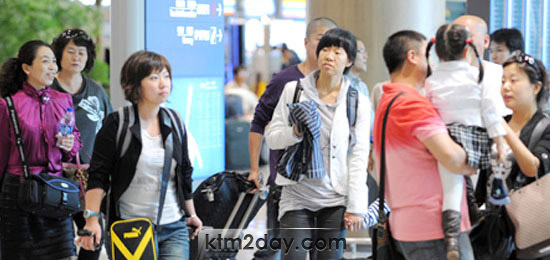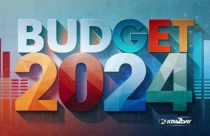Chinese tourists shine in Nepal’s tourism market


Chinese tourists are the newest wrinkle in the domestic tourism sector. Visitors from the northern neighbour are the second largest foreign travelers in the country in the last three years.
Tourism Ministry’s preliminary statistics show Nepal welcomed 85,832 Chinese tourists last year, which is more than 10 percent of the total arrivals in 2012. A total of 53,373 Chinese came to Nepal via air, while the rest came by road.
The growth in the arrival began with the government stepping up efforts to attract Chinese and Indian tourists to Nepal since 2010. “Chinese visitors have been by far the fastest growing segment over the last two years.
The overall tourist growth is satisfactory despite the protracted political transition,” said Rabi Prasad Kayastha, the chief statistician at the ministry. According to him, the number is expected to keep growing, with the air links expanding and China’s middle class growing. Travel trade entrepreneurs say the government and the private sector have now realized the potential of Chinese tourists. In the past, Nepal used to depend on European markets. However, the trend has changed with the world now seeking Chinese travellers.
The rise in Chinese visitors has cheered tourism entrepreneurs. They are, however, struggling to determine what they can offer the visitors from the north.
Hotels, restaurants and tour operators are stepping up efforts to woo big-spending Chinese visitors. “We need more entertainment-based products to divert the affluent Chinese to Nepal,” said Hari Sarmah, the chief executive officer of Nepal Association of Tour and Travel Agents. “As the Chinese are serious shoppers and entertainment seekers, Nepal lacks enough of these.”
The government statistics show that on an average, foreign tourists stay here for 13.12 days and the Chinese stay for 10.14 days, the second lowest after India.
President of Tourist Guide Association of Nepal (Turgan) Hare Ram Baral said Chinese spending in Nepal has of late superseded the spending of European travellers. The reason he gave for this trend is the economic recession in most European countries.
As the Chinese are good bargainers, they spend $60-70 a day on an average. “Although, Chinese intend to spend more, a lack of products of their choice has contained their spending,” Baral said.
The statistics show that spending by tourists on an average has dropped to $39.90 in 2011, against the $43.20 in 2010. On the other hand, the rise in unhealthy competition has led to operators handling the Chinese far below the travel budget the Chinese have allocated, Baral said.
Their favourite places in Nepal are Kathmandu, Pokhara, Jomsom and Muktinath. However, of late, soft adventure sports have also attracted them. More Chinese prefer trekking, paragliding and rafting in Nepal.
Realizing the potential, the government plans to simplify visa procedures for Chinese tourists. Ministry officials said a study team formed to recommend ways to ease visa procedures has submitted its report to the Prime Minister’s Office (PMO) and the Home and Foreign ministries for further discussions.
The team has recommended setting up diplomatic missions in different parts of China for the convenience of prospective Chinese visitors to Nepal. The report has also proposed appointing agents or Visa Facilitation Services (VFS) in major Chinese cities. The VFS, an outsourced partner to facilitate visa applications, is in operation in a number of countries.
The Chinese government has asked Nepal to revise the bilateral air service agreement (ASA) between the two countries as the travel demand has outstripped the seat capacity given to Chinese carriers. Three Chinese carriers—Air China, China Southern and China Eastern—currently land at Kathmandu’s Tribhuvan International Airport (TIA).















